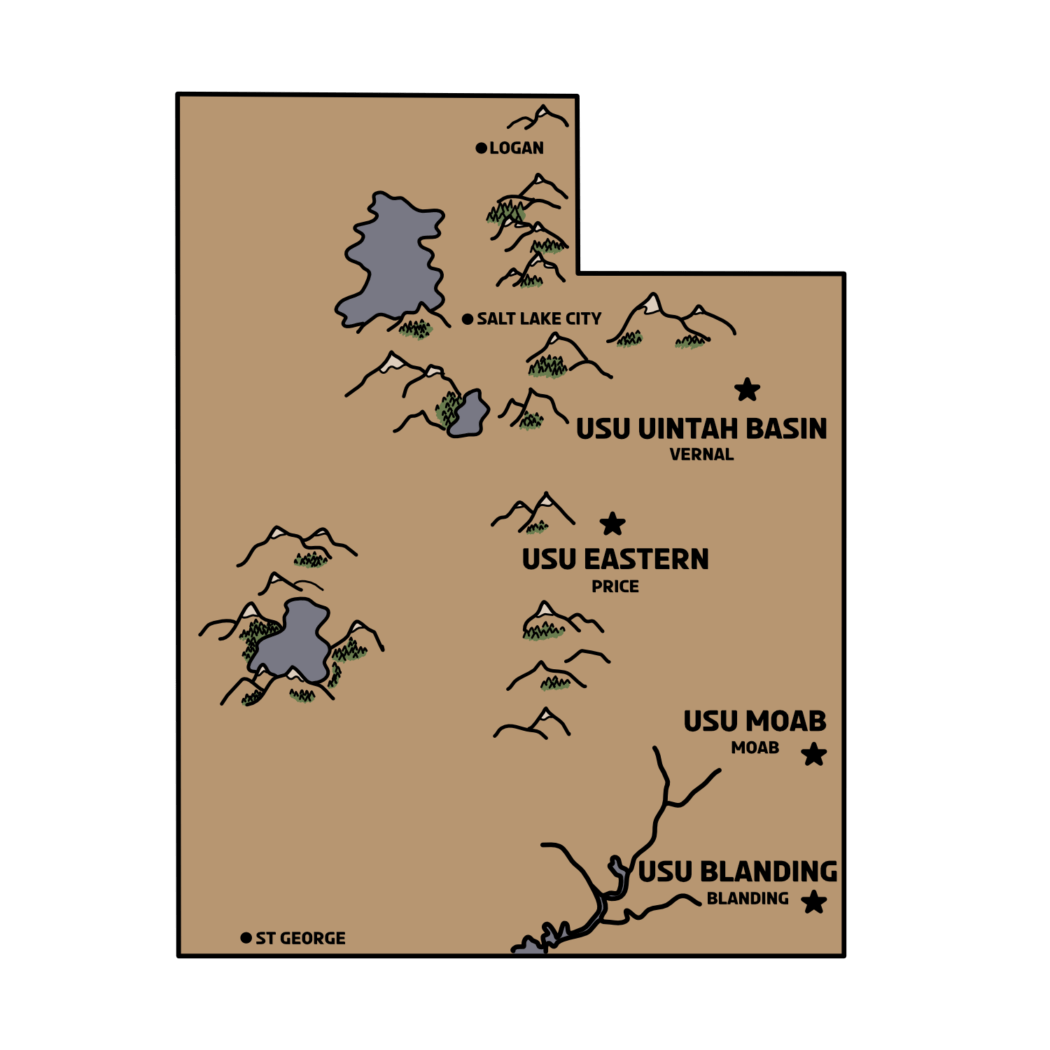History of the Uintah Basin campus
Of the many statewide campuses, the oldest aside from Logan are Utah State University’s Uintah Basin campuses in Roosevelt and Vernal.
Founded in 1967, Uintah Basin started out not as a single campus, but as an education center in rented space. Most classes were held in various locations, including a high school and technical college in Roosevelt and a junior high school in Vernal. Classes were often held in the evening to avoid sharing the same space as the daytime students.
“Rural Utah in the 1960s — the percentage of high school graduates who went on to attend college at all was very small, and those who completed a bachelor’s degree was many times below even the state average of the population centers where higher education was readily available,” said John Barton, principal lecturer of history at the Roosevelt campus.
Barton said for many in rural Utah, if someone couldn’t take over a struggling family farm, that meant looking for a job — a job that might not even be available.
“Most people, if they are not raised in a family who has somebody that went to college, they have a hard time even wrapping their minds around how you go about that,” Barton said. “Let alone finding funding for such.”
Barton, who also wrote a book about the history of USU’s statewide campuses, explained why USU Uintah was needed and how it came to be.
“There had been an attempt, a desire within the Uintah Basin to get a community college,” Barton said. “The state legislature and governor’s office had been favorable on that and had set aside money — $300,000 — but it wasn’t enough, and it wasn’t focused on detail.”
Daniel Dennis, a veterinarian, was elected to the state legislature with the explicit goal from both him and his constituents to get some form of higher education into the basin to alleviate this issue.
This led to the creation of a technical college, which has changed its name multiple times and is currently known as Uintah Basin Technical College. However, this still wasn’t enough.
Upon hearing about the money set aside by the legislature, Dennis began working with Alva Snow, who was on the board of trustees for both USU and Snow College at the time.
After meeting with administrators at USU, they planned to put the school under university extension, as there were already 4-H agents and extension offices throughout the state.
By 1967, they began renting an old house to be a reception center. The vast majority of classes were concurrent enrollment courses with the high school in Roosevelt, with a couple evening classes.
“That was the genesis of distance education, not just in the Uintah Basin, but for Utah State University,” Barton said.
While there were short term attempts in the past, as well as courses and visiting professors since the early 1900s, this was the first long-term plan for an institutionalized program for off-campus distance education.
One of the first programs was a bachelor’s in education, with minors in English and history.
For many rural communities at the time, an issue was new teachers coming in, staying for only a few years and then leaving for other places once they had enough experience. The program was started with the hope that locals would learn how to teach and stick around the area.
As time went on, the student body began to grow, as did an alternating schedule of classes between Vernal and Roosevelt. Today, students can choose between attending Vernal, Roosevelt or an online experience.
The expansion also led to the creation of two part-time faculty positions one in theater arts and the other in mathematics.
Furthermore, a contract was made with an airline based out of Ogden to fly professors from Logan to Roosevelt to teach. Some professors went even further, oftentimes flying to Moab. This flying program would continue for some 30 years.
The campus became increasingly self-sufficient. From 1984-1992, Uintah Basin was among several campuses to begin experimenting with electronic distance classes. By 1994, it was getting national recognition for quality education alongside the Brigham City and Tooele campuses. This led to all three being declared regional campuses by USU’s 13th President, George Emert.
This would only change in 2019, when the regional campus system was renamed as USU Statewide Campuses. USU Uintah Basin, the pioneer of the whole system, is still listed among them.

